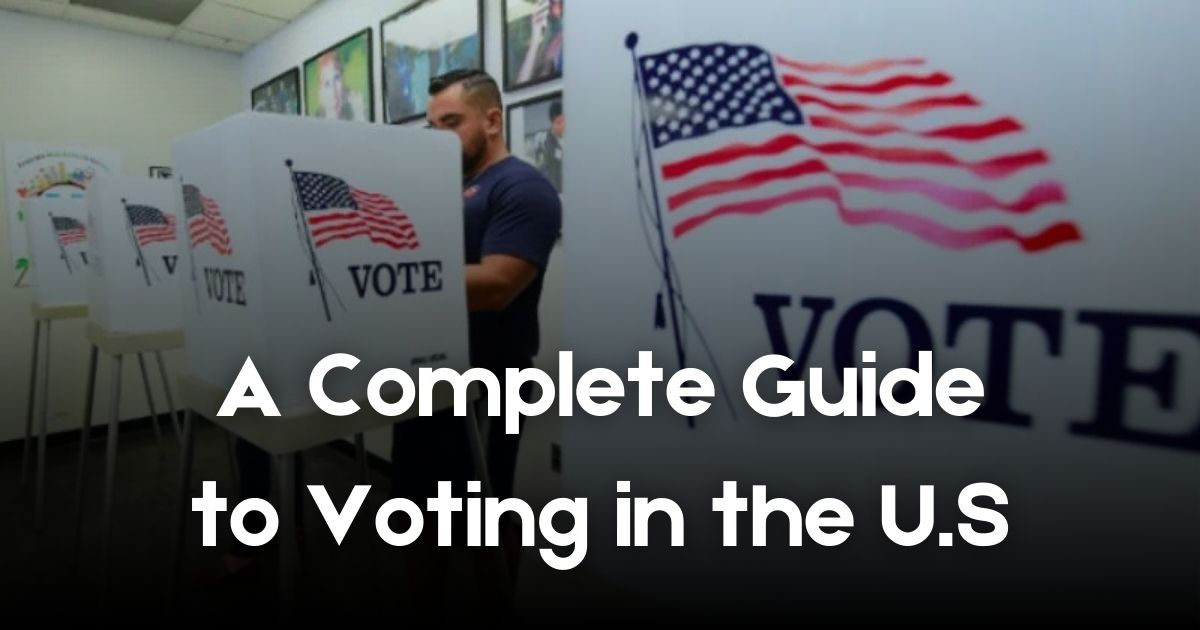
A Complete Guide to Voting in the U.S.: Everything You Need to Know
Voting is an important part of American democracy. When you vote, you help decide who will make the laws and policies that affect your community, your state, and the whole country. Voting lets you have a say in who represents you, from local leaders to the president of the United States. But the process can seem complicated, especially if it’s your first time voting. This guide will explain everything you need to know about voting in the U.S. in simple steps.
1. Who Can Vote?
In the U.S., not everyone is allowed to vote. You can vote if you meet the following requirements:
- Age: You must be at least 18 years old on or before Election Day.
- Citizenship: You must be a U.S. citizen. Non-citizens, including permanent residents, cannot vote.
- Residency: You need to be a resident of the state in which you are voting. Each state has its own rules for how long you need to have lived there to be eligible.
- No Felony Convictions (in some states): Some states don’t allow people with certain criminal records to vote. Other states restore voting rights once the person has served their sentence.
Always check with your local election office if you’re not sure about your eligibility.
2. Registering to Vote
Before you can vote, you must register. This process helps verify who is eligible to vote and ensures that only eligible citizens participate. Here’s how it works:
- Find Out Your State’s Deadline: Each state has a different deadline for registering to vote, so you need to check your state’s rules. Deadlines are often several weeks before Election Day.
- Ways to Register: Most states allow you to register in several ways:
- Online: Many states have online voter registration. You can usually find the link on your state’s official election website.
- By Mail: If you prefer, you can download a voter registration form, fill it out, and mail it to your local election office.
- In Person: You can register in person at your local election office, the Department of Motor Vehicles (DMV), or sometimes at libraries or schools.
- Automatic Registration: Some states automatically register you when you interact with certain government agencies, like when you get a driver’s license.
3. Types of Elections
There are several types of elections in the U.S., each with different purposes. Understanding these will help you know when to vote and what you’re voting on.
- General Elections: Held every two years in November, these are the main elections where you vote for federal and state officials. Presidential elections happen every four years.
- Primary Elections: Primaries are held before general elections. They allow political parties to choose their candidates. Primaries can be “open” (anyone can vote) or “closed” (only registered party members can vote).
- Local Elections: These happen throughout the year and include voting for local leaders like mayors, city council members, and school board members.
- Special Elections: Sometimes special elections are held to fill vacancies or to vote on specific issues like local taxes or bonds.
4. Voting Methods
There are different ways to cast your vote in the U.S. Choose the method that works best for you.
- In-Person Voting: This is the traditional way to vote and is usually done at a polling place on Election Day. Polling places are often set up at schools, libraries, or community centers.
- Early Voting: Many states allow you to vote in person before Election Day. Early voting usually takes place at designated polling locations a few weeks before the election.
- Mail-In Voting (Absentee Voting): If you can’t or prefer not to vote in person, you may be able to vote by mail. Some states send mail-in ballots to all voters, while others require you to request one. Make sure you follow all instructions carefully when mailing your ballot.
5. How to Find Your Polling Place
If you’re voting in person, you’ll need to know where to go. Here’s how to find your polling place:
- Check Online: You can usually find your polling place on your state’s election website or by checking the voter information card sent to you when you registered.
- Use Voter Tools: Websites like Vote.org or the U.S. Vote Foundation have tools to help you find your polling place based on your address.
- Ask Local Officials: Your local election office can tell you where to vote if you’re unsure.
6. What to Bring to the Polls
Some states require you to bring identification (ID) to the polls. Here are some tips:
- Check ID Requirements: Each state has different ID laws. Some require a photo ID, like a driver’s license or passport, while others may accept utility bills or bank statements. Check your state’s requirements before you go.
- Have Backup ID: If you’re not sure what will be accepted, bring a few different forms of ID.
- Voter ID Laws: Some states don’t require ID at all. However, having one can still help speed up the process.
7. How to Fill Out Your Ballot
Ballots can look confusing, especially with so many names and issues listed. Here’s a quick guide on how to fill it out correctly:
- Read the Instructions: Make sure you understand the instructions. You may need to mark an “X,” fill in a bubble, or make a checkmark, depending on the ballot style.
- Choose Carefully: Some elections allow you to vote for multiple candidates in certain races, while others require you to pick only one. Make sure you’re clear on the rules.
- Be Mindful of Write-In Options: If you don’t like any of the candidates listed, some ballots allow you to write in a different person’s name.
8. Common Voting Problems and Solutions
Sometimes, problems can come up when you’re trying to vote. Here are some common issues and how to handle them:
- Not on the Voter List: If your name isn’t on the list at your polling place, don’t panic. Ask to cast a provisional ballot. This allows you to vote while officials verify your registration later.
- Long Lines: Arrive early if possible to avoid long lines. Early voting can also help you avoid Election Day crowds.
- Intimidation or Harassment: If anyone tries to intimidate you or makes you uncomfortable, report it to a poll worker or the election office. Voter intimidation is illegal.
9. How to Vote by Mail
If you choose to vote by mail, follow these steps to make sure your vote counts:
- Request a Ballot (If Required): Some states send mail-in ballots automatically, while others require you to request one.
- Fill Out Your Ballot Carefully: Follow the instructions exactly. Make sure to sign any parts that ask for your signature.
- Return Your Ballot on Time: Each state has a deadline for when mail-in ballots must be received. Make sure you send it in well before the deadline. Some states also allow you to drop off your ballot at secure drop-off locations.
10. Tracking Your Ballot
Some states let you track your ballot to ensure it’s received and counted. Here’s how:
- Check Online: Many states have online tools where you can track your ballot.
- Call Your Election Office: If your state doesn’t offer online tracking, call your local election office to confirm that your ballot was received.
11. Understanding Election Results
Once you vote, you’ll want to know the results. Here’s what to expect:
- Timing: Most results are reported on the night of the election, but final results can take days or weeks. This is especially true if many people vote by mail, as those ballots take time to count.
- Provisional and Absentee Ballots: These ballots might be counted after Election Day, so some close races may not be decided right away.
- Certification: States officially certify election results after a final count, usually a few weeks after the election.
12. Why Your Vote Matters
Every vote counts, even in large elections. In close races, a few votes can make the difference. Voting is your chance to have a say in important issues, from healthcare to education and taxes. Your vote also impacts local decisions that affect your daily life.
Conclusion
Voting is one of the most powerful ways you can make a difference in your community and country. While the process may seem complex, understanding each step can help you feel more confident and prepared. Whether you vote in person, by mail, or early, remember that your voice matters. By following this guide, you’re ready to participate in the next election and make your vote count.






